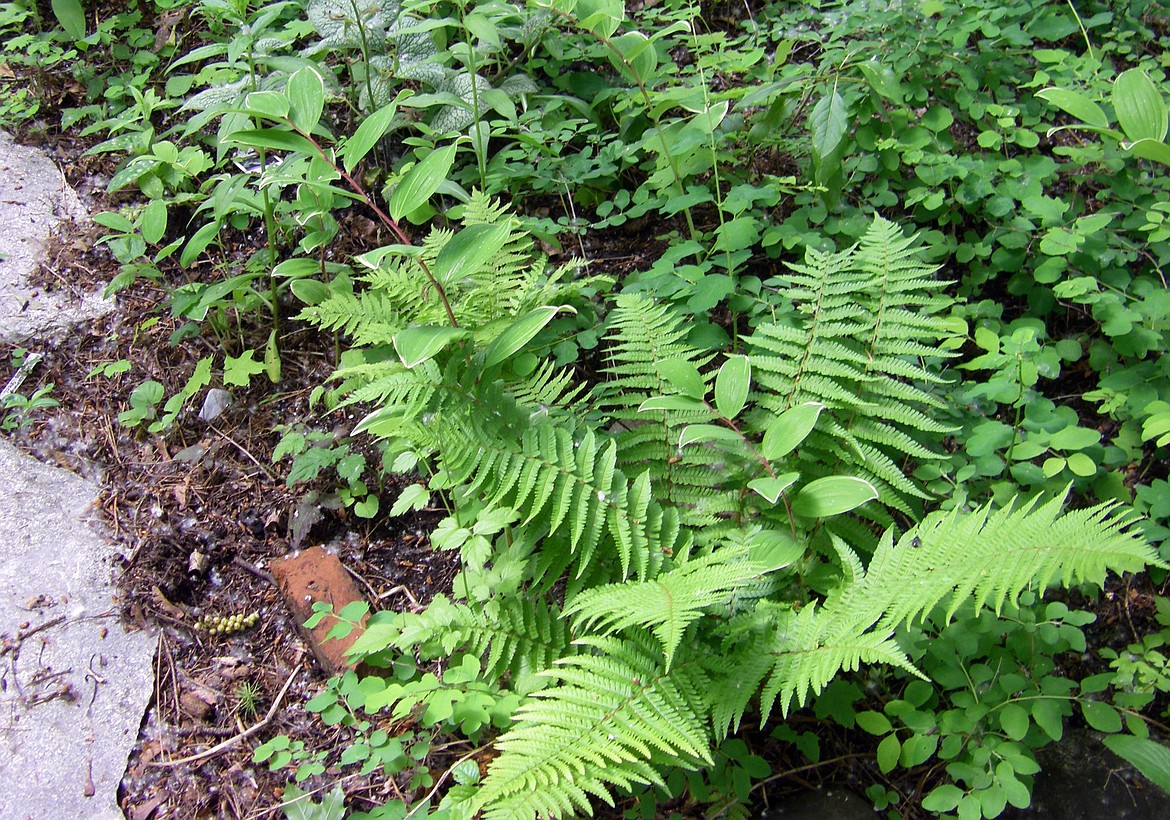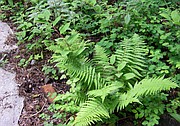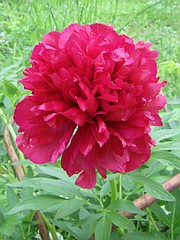The struggle for environmental well-being begins right at home in our own backyards
As I sit through the endless cloudy, cold rainy days — ad infinitum — I at least have the deep and abiding comfort of watching “my” plethora of bird life partaking of sunflower seeds, suet blocks, peanuts and hummingbird nectar under the protecting cover of my porch roof eaves.
Too, the rain hasn’t hurt the onset of my perennials — with big, blowsy ruby-red peony blossoms brightening the landscape like beacons. They are in full fettle now, seeming always to arrive just before the rains, frequently demanding my presence to gently shake out the water-filled blooms and tie up the beaten-down stems with twine.
After their lavish display ends, the next group comes on stage — the open-face Orientals which draw bees and myriad other pollinators to their generous pollen harvest as well as appreciative butterflies and hummingbirds. Pinks and whites follow for a full six- to eight-week display.
The oldest three of my many peony shrubs have to be close to 100 years old. They’ve been with me through at least four home sites since the mid-’70s when Daddy and I each took some from Grandma’s old homestead garden at Chilco where they had been growing since the 1920s.
Peonies need no fertilizers or other special attention. Their wild forebears, after all, grew on rocky, sparse-soiled Mediterranean hillsides as our own native wild peonies grow in often inhospitable mountain clearings. Most are hardy in Zone 3 and many in Zone 2. Since our Zonal planting area is 3-5, they are perfect for North Idaho.
Peonies are one of the most rewarding of all hardy perennials. They need to be happy where they’re planted, because once set they shouldn’t be moved unless absolutely necessary. If you find the right spot, sun or dappled shade, they will live “forever.”
Another happy event (pictured) is the resurrection of my pathway garden — tromped on, churned up, and generally beaten into the ground during the removal of a grove of insect-ridden white fir trees, I held little hope for its recovery. However, as the photos attest, my lovely but tough native plants burst through the morass and are flaunting leaves and blossoms that could heal any broken heart! Natives and native cultivars make up my plantings and have certainly proven their worth.
My bee, butterfly and other pollinating insect population is in full swing enjoying the Columbines, Soloman’s Seal, Bleeding hearts, jPulmonaria, Clematis, Foxgloves and other beauties that seemingly “rose from the dead.” My cup runneth over!
On a national level, since the EPA has been pretty much relegated to the dumpster of governmental concern, those of us who know the importance of Nature’s balance must take up the slack as best we can. The appointment of Scott Pruitt to lead the EPA — regardless of (or perhaps because of) his repeated attacks on the agency — is a “disaster in the making.
The old tradition of teaching about the “birds and bees” may soon become a thing of the past if those of us who remain apathetic. The catastrophic situation of neonic pesticides -tobacco-based, and therefore poisonous to bees (and many other creatures) continues its tragic assault. The foraging carrier bees actually get “hooked” on the nicotine-laced flowers they take pollen from, making them choose those deadly blooms over “clean” ones. They carry it back to the hive to be fed to the young, thus wiping out entire colonies. Obviously, Big Tobacco is still alive and well!
Many people don’t realize our national dependence on bee pollination — almonds, apples, blueberries, zucchini, watermelon — as well as in our home gardens.
Simply stopping using Bayer, Monsanto and Syngenta products can help, but with thousands of pre-inoculated plants being distributed to big box stores with garden sections the public buys and plants these poison-bearers in their gardens for local bees to forage on and carry to their hives. (Pull the plastic labels out all the way and read at the very bottom for the words “neonic” or “pre-treated to deter pests/beetles”, etc. ) Then remember that Ladybugs are beetles! Most beetles are actually beneficial! Let them do their jobs on the aphids, mites,and general clean-up..
Let us bring our gardens back to Nature’s way and stop the poisons! The answer? Simply buy your plants from a reputable bona-fide nursery.
Get neonics info. from Natural Resources Defense Council (NRDC) at NRDC.org/save bees. Another source of information is the Xerces Society pollinators@xerces.org. . *Also check http://www,audubon.org/takeaction ).
Valle Novak writes the Country Chef and Weekend Gardener columns for the Daily Bee. She can be reached at bcdailybee@bonnercountydailybee.com. or by phone at 208-265-4688 between the hours of 8 a.m. to 7 p.m.





